4.13 DOORS.
4.13.1 GENERAL.
Doors required to be accessible by 4.1 shall comply with the requirements of 4.13.
4.13.2 REVOLVING DOORS AND TURNSTILES.
Revolving doors or turnstiles shall not be the only means of passage at an accessible entrance or along an accessible route. An accessible gate or door shall be provided adjacent to the turnstile or revolving door and shall be so designed as to facilitate the same use pattern.
4.13.3 GATES.
Gates, including ticket gates, shall meet all applicable specifications of 4.13.
4.13.4 DOUBLE-LEAF DOORWAYS.
If doorways have two independently operated door leaves, then at least one leaf shall meet the specifications in 4.13.5 and 4.13.6. That leaf shall be an active leaf.
4.13.5 CLEAR WIDTH.
Doorways shall have a minimum clear opening of 32 in (815 mm) with the door open 90 degrees, measured between the face of the door and the stop (see Fig. 24(a), (b), (c), and (d)). Openings more than 24 in (610 mm) in depth shall comply with 4.2.1 and 4.3.3 (see Fig. 24(e)).
EXCEPTION: Doors not requiring full user passage, such as shallow closets, may have the clear opening reduced to 20 in (510 mm) minimum.
Figure 24
Clear Doorway Width and Depth
Figure 24(a) Detail
Figure 24(b) Hinged Door
Figure 24(c) Sliding Door
Figure 24(d) Folding Door
Figure 24(e) Maximum Doorway Depth
4.13.6 MANEUVERING CLEARANCES AT DOORS.
Minimum maneuvering clearances at doors that are not automatic or power-assisted shall be as shown in Fig. 25. The floor or ground area within the required clearances shall be level and clear. Entry doors to acute care hospital bedrooms for in-patients shall be exempted from the requirement for space at the latch side of the door (see dimension "x" in Fig. 25) if the door is at least 44 in (1120 mm) wide.
Figure 25
Maneuvering Clearances at Doors
Figure 25(a) Front Approaches Swinging Doors
Figure 25(b) Hinge Side Approaches—Swinging Doors
Figure 25(c) Latch Side Approaches—Swinging Doors
Figure 25(d) Front Approach—Sliding Doors and Folding Doors
Figure 25(e) Slide Side Approach—Sliding Doors and Folding Doors
Figure 25(f) Latch Side Approach—Sliding Doors and Folding Doors
4.13.7 TWO DOORS IN SERIES.
The minimum space between two hinged or pivoted doors in series shall be 48 in (1220 mm) plus the width of any door swinging into the space. Doors in series shall swing either in the same direction or away from the space between the doors (see Fig. 26).
Figure 26 Two Hinged doors in Series
4.13.8* THRESHOLDS AT DOORWAYS.
Thresholds at doorways shall not exceed 3/4 in (19 mm) in height for exterior sliding doors or 1/2 in (13 mm) for other types of doors. Raised thresholds and floor level changes at accessible doorways shall be beveled with a slope no greater than 1:2 (see 4.5.2).
4.13.9* DOOR HARDWARE.
Handles, pulls, latches, locks, and other operating devices on accessible doors shall have a shape that is easy to grasp with one hand and does not require tight grasping, tight pinching, or twisting of the wrist to operate. Lever-operated mechanisms, push-type mechanisms, and U-shaped handles are acceptable designs. When sliding doors are fully open, operating hardware shall be exposed and usable from both sides. In dwelling units, only doors at accessible entrances to the unit itself shall comply with the requirements of this paragraph. Doors to hazardous areas shall have hardware complying with 4.29.3. Mount no hardware required for accessible door passage higher than 48 in (1220 mm) above finished floor.
4.13.10* DOOR CLOSERS.
If a door has a closer, then the sweep period of the closer shall be adjusted so that from an open position of 70 degrees, the door will take at least 3 seconds to move to a point 3 in (75 mm) from the latch, measured to the leading edge of the door.
4.13.11* DOOR OPENING FORCE.
The maximum force for pushing or pulling open a door shall be as follows:
(1) Fire doors shall have the minimum opening force allowable by the appropriate administrative authority.
(2) Other doors.
(a) exterior hinged doors: (Reserved).
(b) interior hinged doors: 5 lbf (22.2N)
(c) sliding or folding doors: 5 lbf (22.2N)
These forces do not apply to the force required to retract latch bolts or disengage other devices that may hold the door in a closed position.
4.13.12* AUTOMATIC DOORS AND POWER-ASSISTED DOORS.
If an automatic door is used, then it shall comply with American National Standard for Power-Operated Doors, ANSI A156.10-1979. Slowly opening, low-powered, automatic doors shall be considered a type of custom design installation as described in paragraph 1.1.1 of ANSI A156.10-1979. Such doors shall not open to back check faster than 3 seconds and shall require no more than 15 lbf (66.6N) to stop door movement. If a power-assisted door is used, its door-opening force shall comply with 4.13.11 and its closing shall conform to the requirements in section 10 of ANSI A156.10-1979.

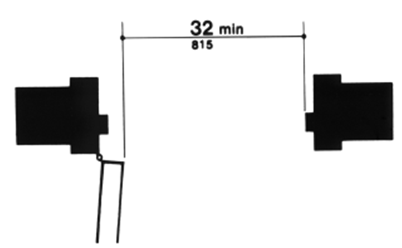
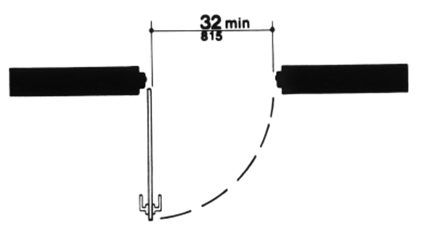


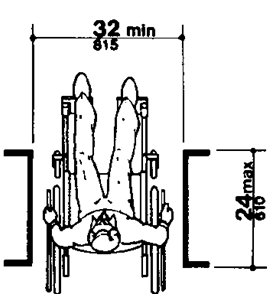
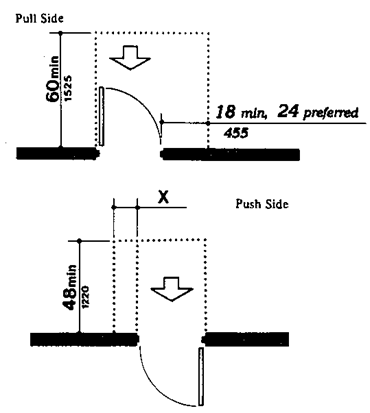
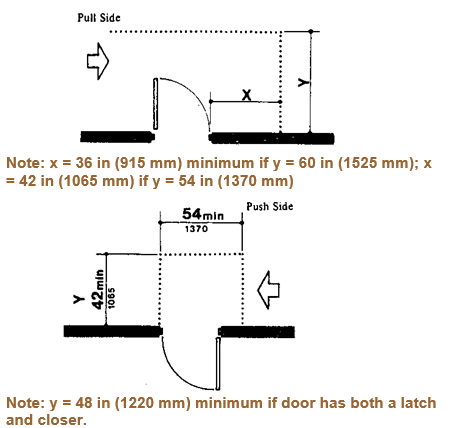
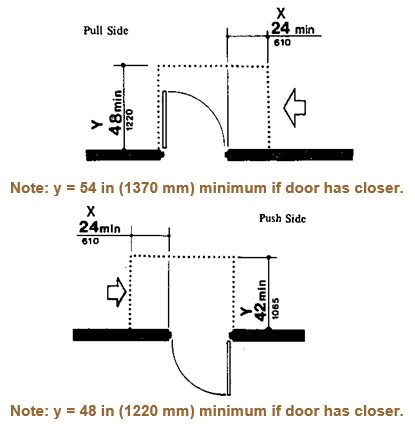
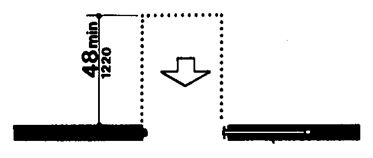
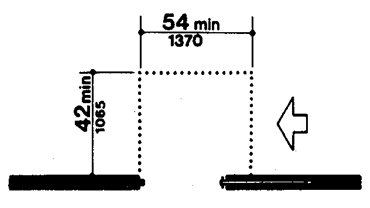
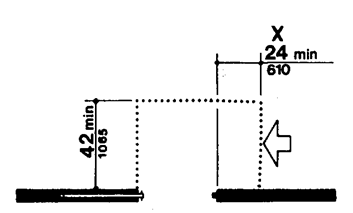
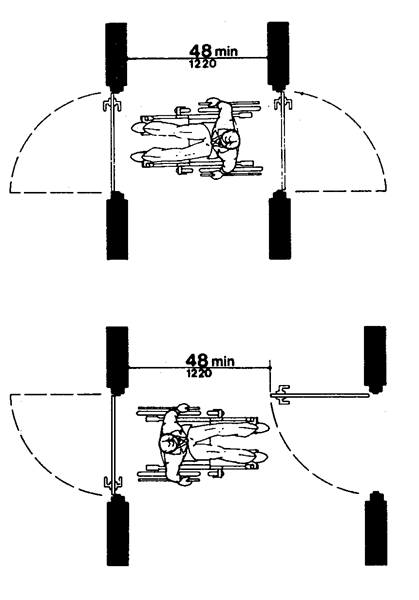
User Comments/Questions
Add Comment/Question